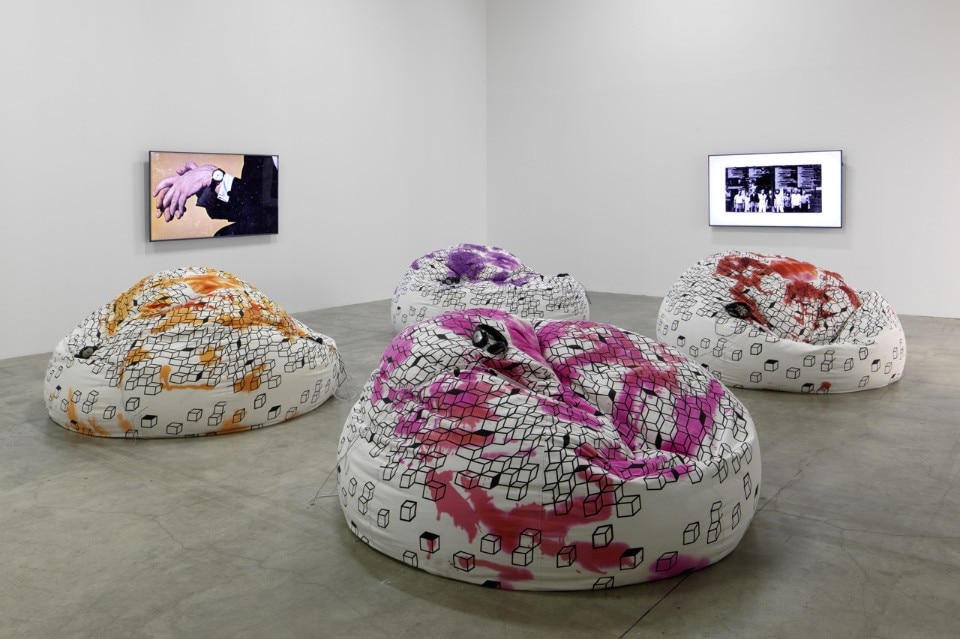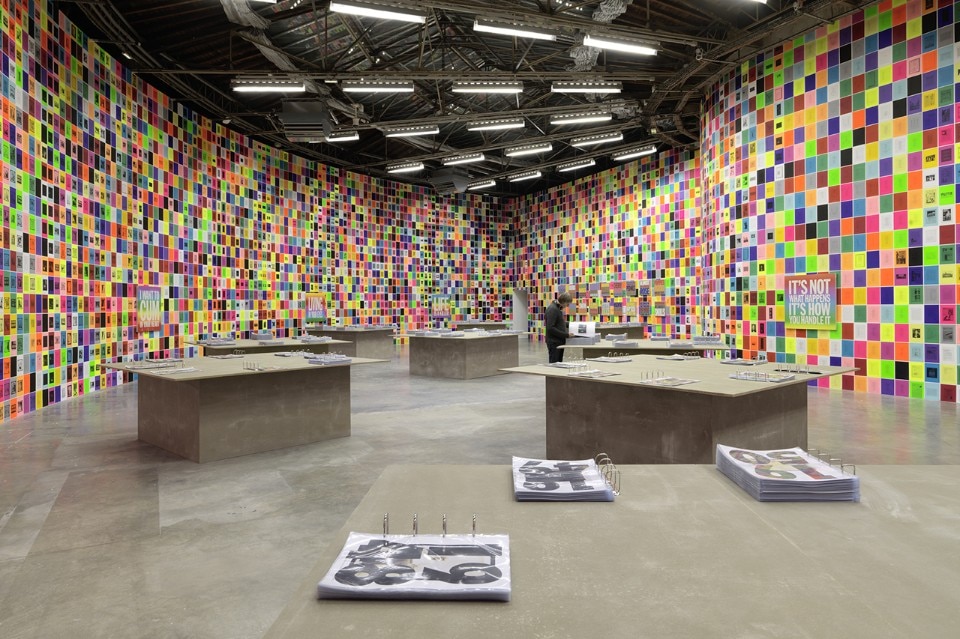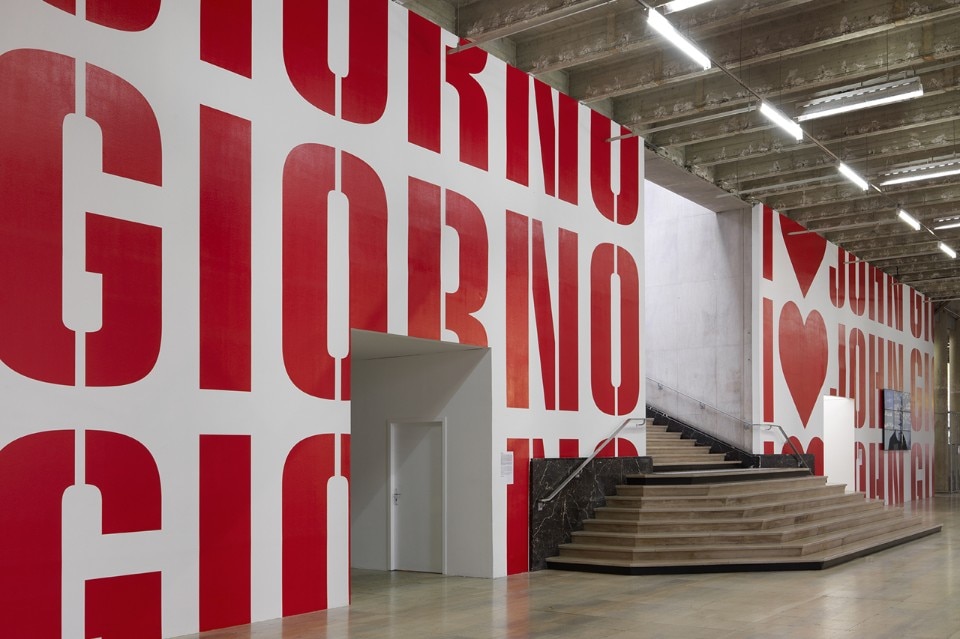
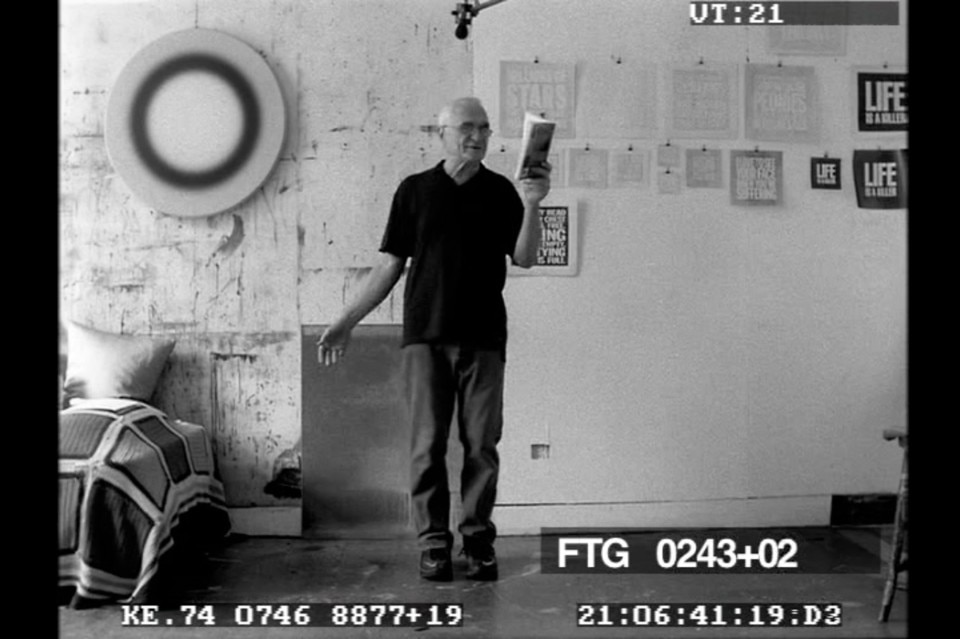

A reuse of the seminal Warhol demon is nearly always at play in one way or the other, especially in the architectural dimension. With Tiravanija, it is the model once again, a scale 1:1 reconstruction of the artist’s workspace that becomes a highly successful container for poetic redistribution strategies tout court.
Giorno freed the poem from the page, took it into the streets, distributed across all media to make it a galaxy of critical sensibility and indestructible widespread beauty, outside and inside the exhibition. Rollerblading girls reactivate the distribution of texts as in the encounters with the public commenced in the late 1960s.
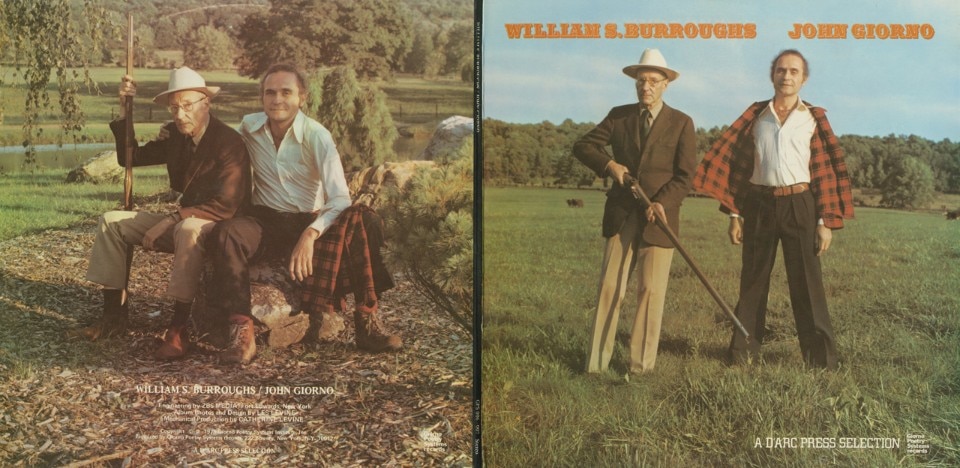
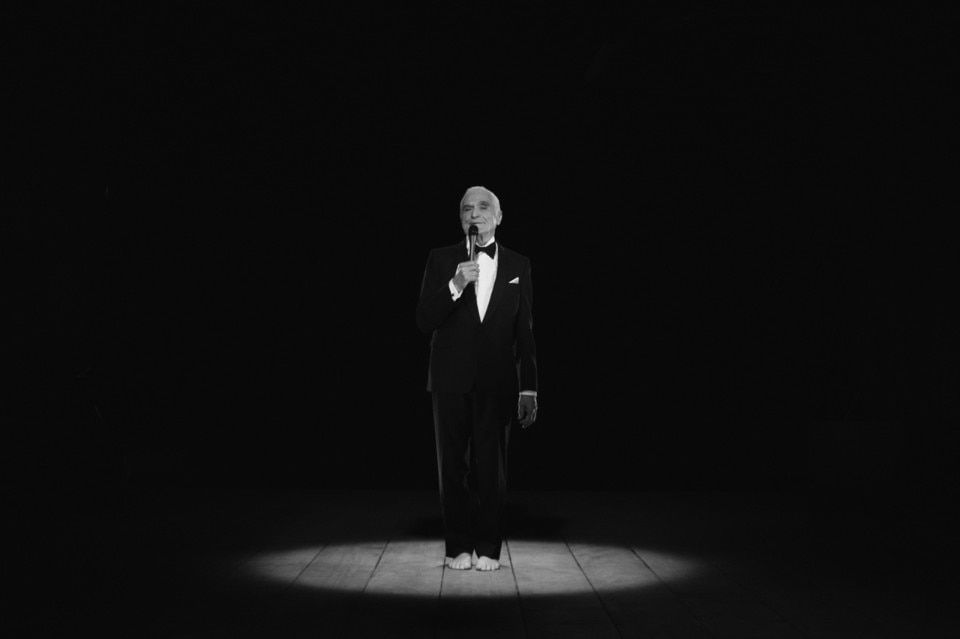
Thanx 4 Nothing is a wonderful poem written by Giorno for his 70th birthday in a presentation staged and filmed by Ugo Rondinone. In it, the poet turns into a magnificent crooner or boxer in an elegant tuxedo with bare feet on the stage of the Palais des Glaces in Paris.
The beat generation could not have a better installation in today’s anthropocene age. This performance will probably go down as one of the best attempts to drill from a seemingly inexhaustible deposit. Be it the joy of the Buddhist spiritual act so dear to all the beat poets or what John Giorno communicates, there is a surplus, his own secret energy in the meticulous and tireless activity of the performer, amanuensis, philosopher and archivist of a poetry that seems to spring from a collective act and is only fulfilled in the encounter with an audience.

The display of his archives in the central exhibition room is a mind-blowing undertaking, with poems turned into wallpaper but also thousands of documents and ephemera, as if this man had passed through dozens upon dozens of periods of recent art history, all available for consultation like the room of an enormous library.
A profound dedication to the text, perhaps echoing the daily practice of the Nyingma Buddhist school, which is in itself a transcription from Sanskrit to Old Tibetan, and the ancient passage from orality to writing are its precepts. This is more probably the secret behind the many sutra mantras and purified and effective texts that surround us and fill the exhibition, even in karaoke version.
